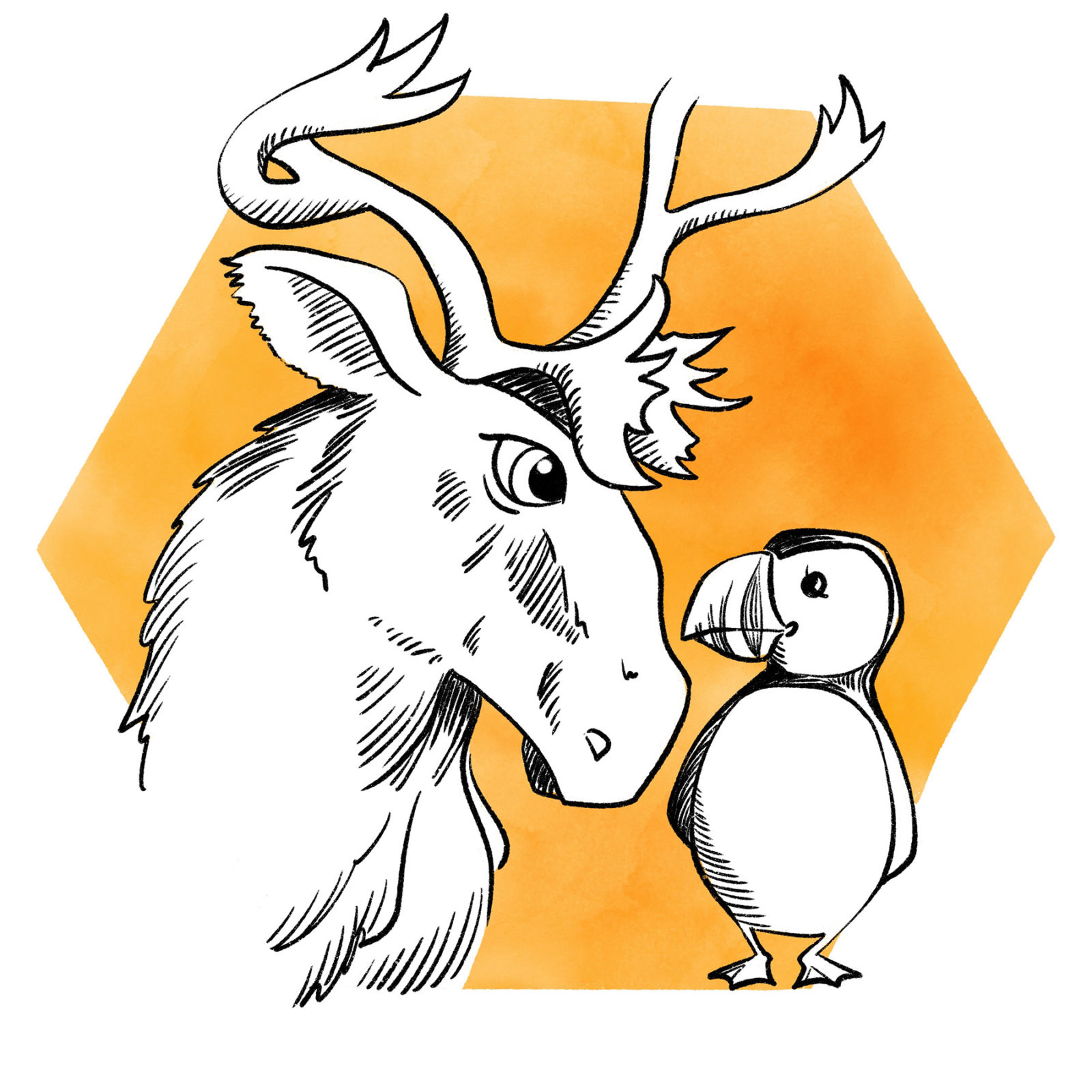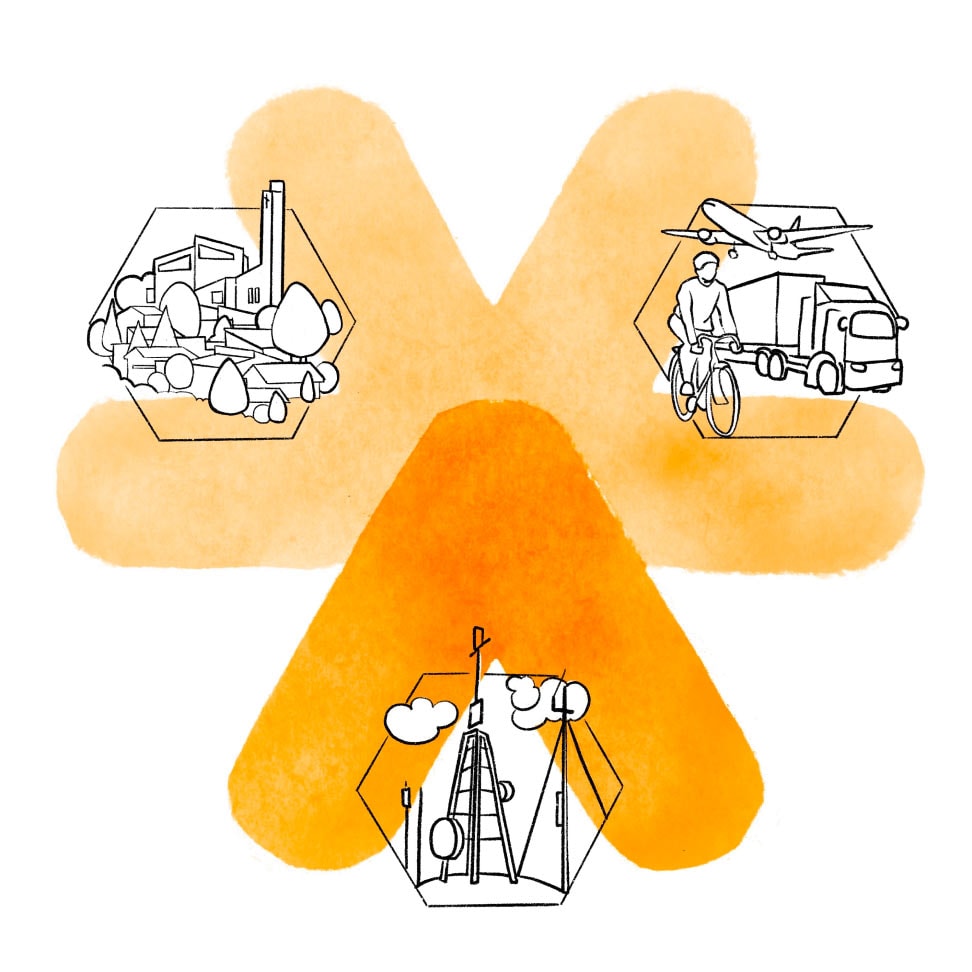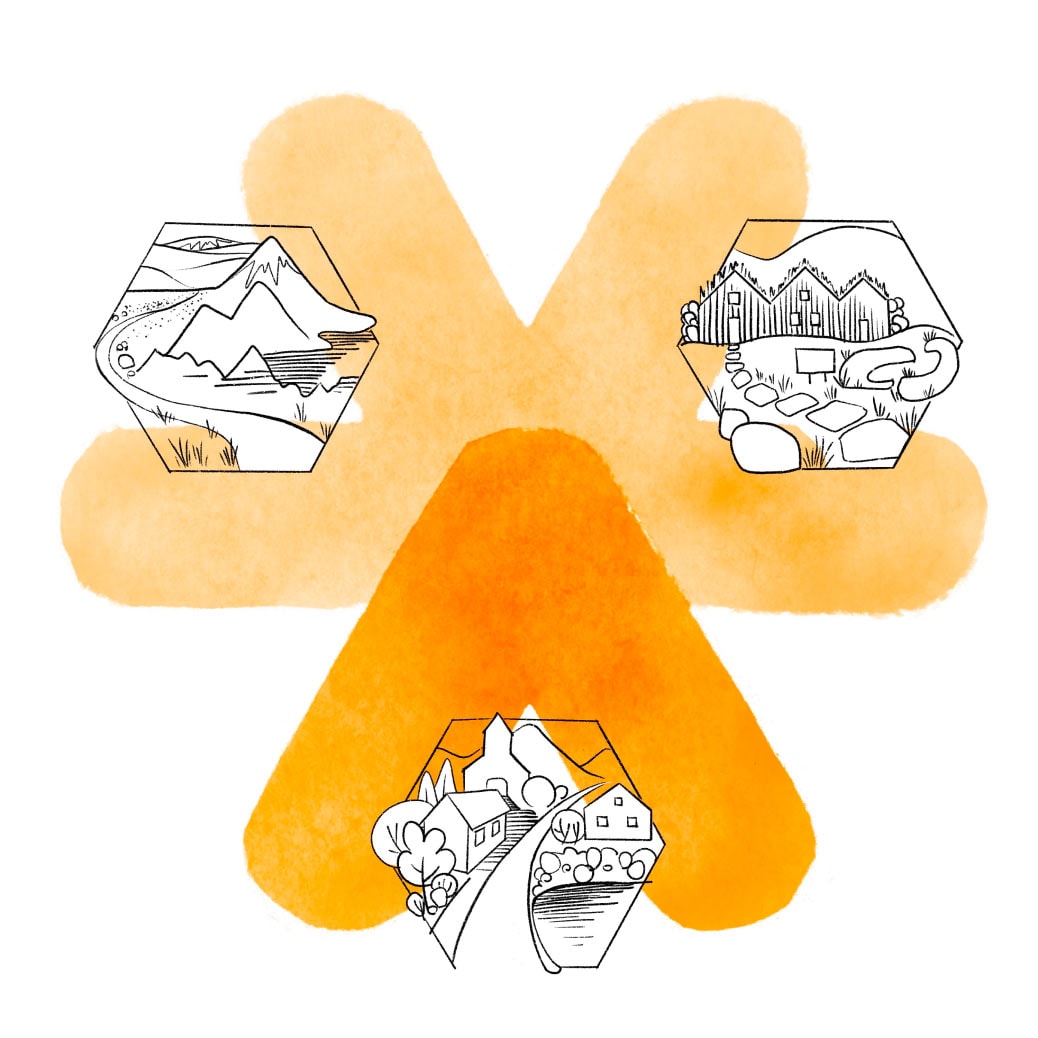3. Good Habitats
East Iceland will continue to be a good place to live. The environment, both man-made and natural, will be healthy, eco-friendly, and safe. It will be good to reside in East Iceland and desirable to visit.
The municipalities in East Iceland intend to achieve this by working towards common goals that fall under:
3.1 Settlements and Infrastructure
3.2 Global and Local Ecosystems
3.3 Landscapes and Places

The objectives address the following aspects to ensure that East Iceland is:
A region where the community enjoys good transportation, sustainable energy, and strong telecommunications.
A region working to strengthen resilience against global climate change and maintain the health of local ecosystems.
A region that respects the value of nature and landscapes, emphasizing the creation of attractive places based on landscape characteristics, history, and healthiness.

3.1 Communities and Infrastructure
In East Iceland, the pattern of strong urban centres in a polycentric community will continue to develop, and the options for living in rural areas without ties to farming will increase. Eco-friendly modes of travel will be preferred, and roads in East Iceland will be safe all year round. Necessary transportation improvements will be undertaken and public transport strengthened. There will be a strong emphasis on regular scheduled flights to and from East Iceland, and key transportation facilities in the region will be maintained and enhanced. Energy resources will be utilized to strengthen settlements, the electricity transmission and distribution system will be reliable, and telephone and internet connections throughout the region will be ensured.
The chapter’s topics are:
A. Settlement Patterns
Á. Transportation
B. Electricity and Telecommunications

3.2 Global and Local Ecosystems
Carbon neutrality will be achieved in as many areas as possible of the environment, industry, and society, green infrastructure will be strengthened, and ecosystems will remain healthy and diverse.
The chapter’s topics are:
D. Climate Issues
E. Ecosystems and Biodiversity

3.3 Landscapes and Places
In East Iceland, the pattern of strong urban centres in a polycentric community will continue to develop, and the options for living in rural areas without ties to farming will increase. Eco-friendly modes of travel will be preferred, and roads in East Iceland will be safe all year round. Necessary transportation improvements will be undertaken and public transport strengthened. There will be a strong emphasis on regular scheduled flights to and from East Iceland, and key transportation facilities in the region will be maintained and enhanced. Energy resources will be utilized to strengthen settlements, the electricity transmission and distribution system will be reliable, and telephone and internet connections throughout the region will be ensured.
The chapter’s topics are:
É. Landscape types and protected areas
F. Place formation
G. Monuments and history
